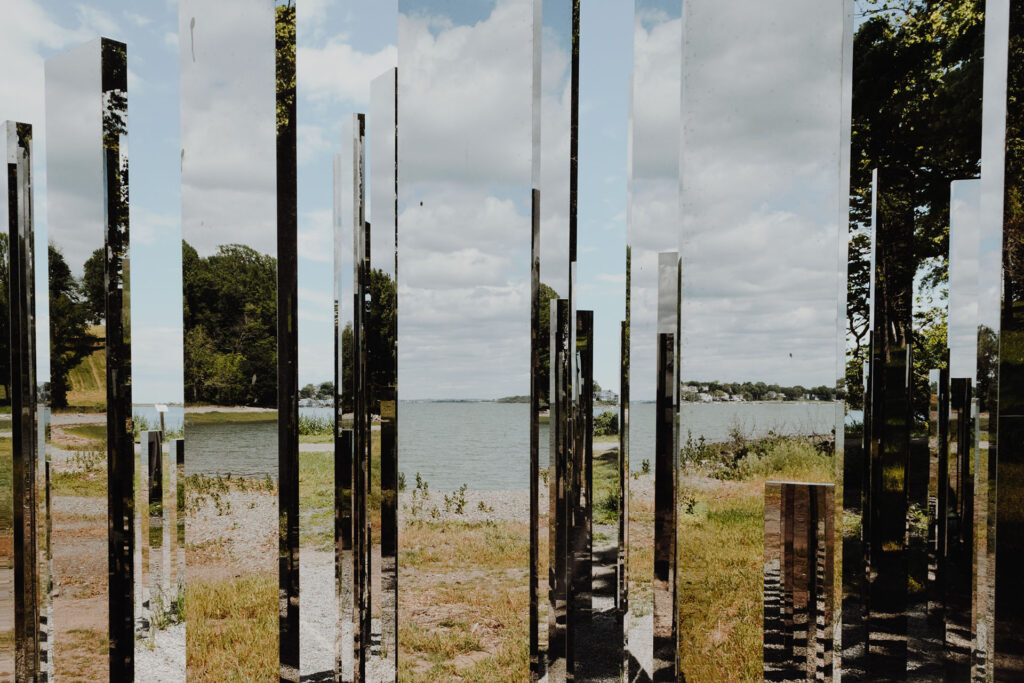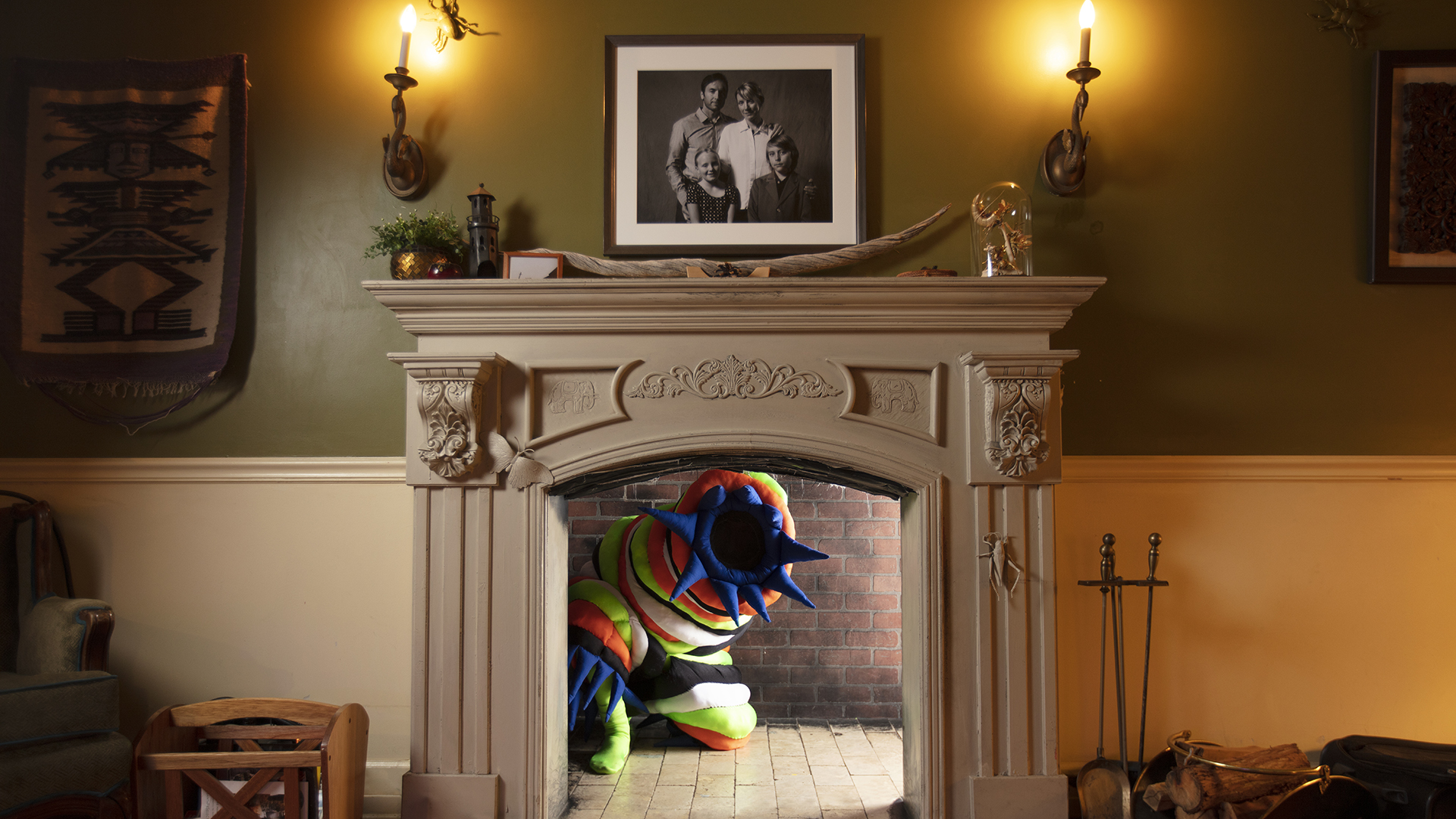Our WXO Experimental Campfires aren’t just about listening to extraordinary ideas. Each gathering is an opportunity to question what we’ve heard, pull it apart, and then reassemble it in exciting new ways – hopefully transforming (or at least tweaking!) the way we design, create and improve experiences in our own realms.
For our 14th edition, the topic in question was the new, enticing, and sometimes intimidating world of augmented reality (AR). Game writer and AR specialist Rob Morgan gave us an igniting Firestarter talk introducing us to the complexities and opportunities within this brave new world, from ambient storytelling to hyper labels and non zero-sum game information design – read the full debrief here.

We then asked members of our Founding Circle to reflect on Rob’s words of wisdom and as usual, they came through with some mind-blowing meanderings of their own. Here are six of the Sparks that went flying when we handed the mic over to them.
Living in a hallucination: fun or frightening?

Kevin Dulle, experience designer and ‘visual thinkologist’, wondered if AR’s potential to allow us to alter the world we live in so that it looks the way we want might leave us “living in a hallucination all the time” – a scenario that left half our camp enthralled, the other appalled.
The idea appealed, for instance, to WXO Founder James Wallman. But a Campfire attendee from a global retailer asked if tailoring our reality might lead to real-life echo chambers as dangerous as those we already see online.
“At the moment when you interact with the world, you hear some messages that you like and others that you don’t. But if you’re looking at it through an augmented reality that you curate, you might end up reinforcing your beliefs and not getting the disparate opinions in your life that are an important part of being a human being with a balanced view of the world.”
WXO Campfire attendee from a global retailer
Rob agreed that customised reality does risk recreating social media bubbles in the real world.
“It’s a balance of encouraging multiplicity while understanding that people are going to have their own browsers and ability to untag what they don’t want to see.”
Rob Morgan, AR expert
And in a world of Black Mirror and 1984, perhaps we’re just hyper-sensitive to the potential misapplications of any world-altering technology.
“One of the differences between today and the past, even 10-20 years ago, is that we are much more aware of the potential negative effects of new technologies and applications that can happen amid all the wondrous new capabilities they give us.”
Joe Pine, co-author, The Experience Economy
Design (once) for different audiences

Our Campfire were interested in Rob’s ideas about non zero-sum information design and hyper labels allowing for a multiplicity of perspectives and therefore choices. Even though Bob Rossman, co-author of Designing Experiences, wondered if we might be heading towards information overload, he liked the idea of a narrative you could tailor towards your interests.
“I think it’s really important that people can control the kind of things they’re interested in finding out about and answer their own curiosities.”
Bob Rossman, co-author, Designing Experiences
Mat Duerden, Bob’s co-author and an experience design educator at Brigham Young University, mentioned the work of Roy Ballantyne and his team at the University of Queensland into free-choice learning design, pointing out the parallels with non zero-sum information design.
“AR takes this to the next level of being able to make sure you’re not just designing for the choir, but you’re providing people with experiences that are connected to their values and motivations.”
Mat Duerden, co-author, Designing Experiences
However, James pointed out that as we’ve discussed in past Campfires, people like to have choices made for them rather than being overwhelmed with options. Or as Joe Pine put it:
“People don’t want choice. They just want exactly what they want.”
Joe Pine, co-author, The Experience Economy
AR enables dynamic design for dynamic people

One of our attendees was intrigued by the potential of layering information in an experience, particularly when it comes to art or retail.
“Sometimes people are just looking for things in a transactional sense. But on other occasions, they can be looking for much more depth of information. People want to interact with things in different ways – understanding provenance, origin, food miles, which wine goes well with which cheese, and so on – and that perspective can be quite dynamic.”
WXO Campfire attendee from a global retailer
So if the customer journey ebbs and flows as they move around an environment, how can we get those layers to be truly dynamic? How can we make it so a customer can change the layer they are interacting with in an environment within the moment?”
This same attendee also wondered if this dynamic ebb and flow could be used to help guide people towards better choices.
“It would have been really interesting in the last 12 to 18 months of the pandemic to gently nudge people to do the right thing through augmented reality; understanding where they were in context of other people and how they could just be a better citizen…”
WXO Campfire attendee from a global retailer
AR enables non-linear storytelling

Stephanie Riggs, author of The End of Storytelling, put forward her case for the end of traditional – or at least linear – storytelling back in Campfire 3. And it seemed like our experts were excited by the potential of AR to accelerate this movement.
Didi Bethurun, Vice President of Marketing at immersive art experience innovators Meow Wolf, wondered about how many AR experiences take you along non-linear paths that don’t have a traditional sense of an ending.
“Is that sense of uncertainty a benefit or a disadvantage? I actually think it’s a benefit, because it forces you to sit with what’s going to come next, and what you’re going to make happen next, and what you’re feeling”
Didi Bethurun, Vice President of Marketing, Meow Wolf
Experiential and purpose marketing pioneer Max Lenderman agreed that a dose of uncertainty can lead to a richer experience.
“Lots of marketing tries to get rid of confusion, but true growth is being comfortable in that confusion. It might be the first step to transformation or a sense of self knowledge that wasn’t available to you in a more linear narrative landscape.”
Max Lenderman, founder, Camus
Mat Duerden built on this with the idea of “disorienting dilemmas”:
“Transformative learning theory suggests that the starting points for transformation are disorienting dilemmas. It’s not like closed-loop experiences; it’s being shaken out of the everyday.”
Mat Duerden, co-author, Designing Experiences
Nasya Kamrat, CEO of spatial storytelling firm Faculty, added that this kind of non-linear, unexpected storytelling also has the benefit of making the user a participant in the experience and personalising it to them.
“They become part of the journey as opposed to it being a didactic experience, which is what a lot of linear storytelling is. And the more people feel like it’s personalized to them, the more engaged they’ll be. From research I’ve done, 80% of consumers will share their data if they think they are getting a personalised experience.”
Nasya Kamrat, CEO, Faculty
AR can be ‘digital grafitti

There were some concerns about who owns and controls the operating system or layers that people would see the world through in an AR experience. Dean of the X Thinking Institute in Shanghai, Mike Lai mentioned security concerns in China related to Pokémon Go. If Google is the operating system that controls the internet, he wondered, what’s the operating system for AR?
Rob agreed that if a software monolith is able to create the main way that people engage with the digital layer, they also will effectively control the means of access to that digital layer.
“Banksy says that asking to graffiti over an advertisement is like asking to keep a brick that’s been thrown at your head, because adverts are an attack on our attention. The way that public space has been bought up and monopolized by advertisers is very likely to happen in the digital layer too. So the danger is that the digital level becomes saturated with one monolithic perspective.
That’s why I think that, whether it’s open source or another solution, AR is about being able to leave each other notes in the margins of reality. And that means we have to bake in the capacity for people in the margins to be able to use these tools, because otherwise they’ll lose access to the public layer.”
Rob Morgan, AR specialist
How AR can haul people into the real world

For all the worries about AR’s potential to separate and control our perspectives, Sharzad Behzadian, a WXO Founding Member and creator of immersive city experiences in Lisbon, put forward that AR provides a brilliant opportunity to immerse people more intensely into their environment – a valuable quality in our ‘attention economy’.
“The challenge of adding digital layers is that it’s immersive enough for the user to imagine new realities, but not so addictive that they forget about the reality they live in. The immersive story should bring their attention to their reality and give them the ability to look at it from different lenses. It’s a tool for them to reconnect with reality and the people in their community.
I’m very passionate about using actual locations to create experiences, because we get so used to our routines that we don’t see the details in front of us. But different stories bring attention to different realities. We have the power with the stories we tell to bring people into different scenarios and create empathy in the real world, rather than making it so exciting for them that they want to lose their reality in an imagined world.”
Sharzad Behzadian, CEO, Immersive City Tales
(Sidenote: if you’re interested in more about immersion and empathy, then check out Campfire 9, when Paul Zak’s work in neuroscience and measurement took us on a journey through both.)
Mat also thought that adding layers to reality can make it that much richer.
“I tell my kids that a walk in the woods is great, but the more information we lay on – the names of the plants, the bugs, the history of the indigenous people who used to live here – the more interesting it is. Layers just make life more rich – they pull us into reality. And so being able to use AR to digitally add those layers onto experiences does the same.”
Mat Duerden, co-author, Designing Experiences
The WXO Take-Out
Understandably, there are still some hesitations around the integration of AR into experiences. Will we get lost in a hallucinatory world? Will we block out different or contradictory opinions, leaving us living in a real-life filter bubble? Who will control the interface between the augmented and real worlds? Taken to an extreme, will AR encourage us to create a utopian or dystopian worldview?
Once we take our Black Mirror/1984 lenses off, however, AR’s ability to add different, multiple layers to our world could actually result in a richer, more nuanced and empathetic perspective that pulls us into reality, rather than taking us out of it – and enable experience designers to create more personalised, co-created experiences that place the individual at the centre of the story.
And if we find a way to design for “ebb and flow” – allowing people to access more information and perspectives when they want it, and turn it off when they don’t want to be overwhelmed – the potential for more customisable, creative experiences in everything from museums to shopping malls is truly exciting.
Interested in taking part in discussions about experiences and the Experience Economy? Register your interest in becoming a member here to be the first to know about upcoming WXO events, both digital and IRL.





